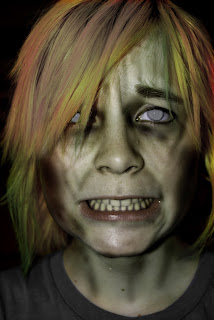Brochure View – Outside
Printers will require 2 pieces of artwork, 8.75 tall x 11.25 wide, for the outside and inside trifold brochure. This first illustration is the outside, and panels are marked A, B, and C and must be the following widths: A = 3.70”, B = 3.81”, and C = 3.74”. The top, bottom, and each side edge will have 0.125” trimmed, so the final overall dimensions will be 8-1/2 × 11.
In addition, all text must be at least 0.25” from all edges which keeps it 0.125” from the edge once trimmed. Otherwise, text may be blurry if not kept inside this “safe” area.
Brochure View – Inside
The inside is similar to the outside, yet it requires a mirror image template. Panel D will be printed on the back of Panel B, therefore the dimensions for each must be the following widths: E = 3.70”, D = 3.81”, and F = 3.74”.
When setting up your 2 templates, use guidelines for the safe area on all edges, PLUS have one center line (where folded) with two 0.125” guidelines separating each of the 3 panels.
Unlike the outside, the 3 inside panels may have elements that cross over several panels (like the faded photo).
Brochure View – Completely Folded
Here is the outside once completely folded. Here you may see where the stamp and label are placed, plus see how the “teaser” advertising will appear on the “back” when received by your customer and then flipped over.
Knowing how people handle and view your brochure when received in the mail is part of the strategy used to maximize impact and improve chances they will keep your information.
In addition, the “back” (teaser ad) is perfect for grabbing attention when used as a vertical display on a counter top or rack.
Brochure View – How the Outside is Folded
Next is the outside to illustrate how it is folded. Note that panel C is more narrow (slightly) than the others so the outside edges are even once it is folded.
Panel C is folded first and then panel B, so Panel B becomes the “back”. Create your design so that Panel B will be the “front” when displayed vertically on a rack or countertop.
First impressions are always important. Viewers decide within 5 seconds if they want to keep your brochure, so take advantage in your message on Panel B.
Brochure View – How the Inside is Folded
Next is a view of the inside artwork to see how it is folded. Here Panel F (which is the back of C) is again slightly more narrow so that it tucks in neatly without leaving a bulge, and the folded edges will line up evenly.
As your customer opens your trifold brochure, Panel E is “hidden” until it is completely opened, so Panel D is another opportunity to list bullets, or some other eye catching feature.
People read left to right, and top to bottom, so consider eye movement in your layout to lead the reader naturally through your message.
Brochure View – How Panel C is Viewed
Finally, here is a view showing part of the inside and how panel C is folded. As the customer views the “back” teaser advertising (Panel B above), and then opens the brochure, they will see Panel C plus Panel D.
Obviously the information in Panel C may not get much attention initially. Most viewers will be anxious to see the inside, much like opening a gift. Not to worry. If you have considered how they view and open your brochure, make a good first impression and they will enjoy flipping and reading everything more than once.







